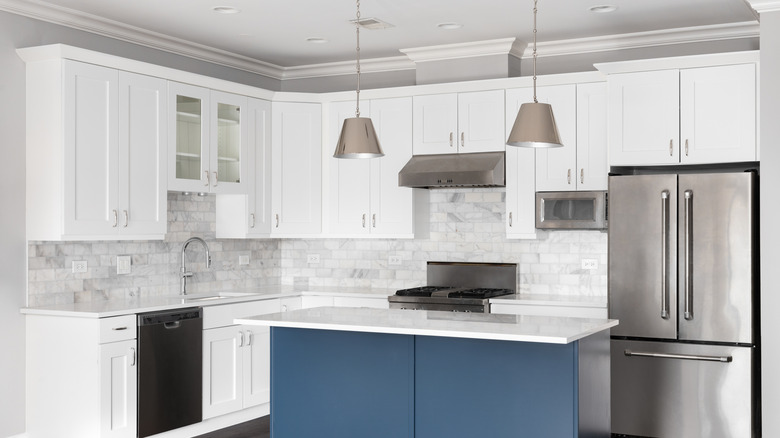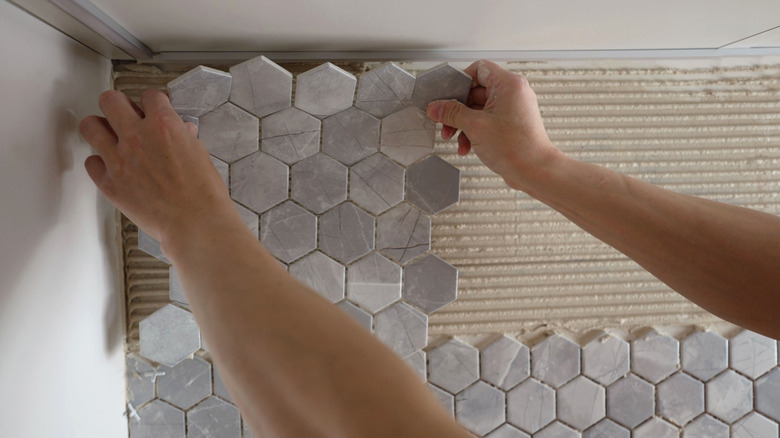Give Your Kitchen Cabinets A Modern Update By Hiding This Outdated Eyesore
We may receive a commission on purchases made from links.
Does the look of your kitchen feel a bit outdated, but you're unsure which elements to change to bring a more modern feel to the space? While it can be easy to focus on the big-ticket items by upgrading countertops or even bringing in new appliances, these methods don't consider the bigger picture. One often overlooked area that can make kitchens feel outdated is the gap above the cabinets that leaves open space to the ceiling, sometimes called a soffit gap. Instead of installing all-new cabinets, try building cabinet boxes to cover this area and add additional storage to boot. For a simpler way to hide this gap, use decorative elements and existing materials like backsplash to create a cohesive space.
While it may seem strange for cabinets to have this empty gap above them, some variations do have functionality behind the design. Many cabinet gaps occur due to the soffit, which is installed to keep construction elements like piping and wiring hidden from view. It can also make it easier to reach items in the cabinets without having to grab a ladder. In modern installations, it comes down to whether you want this bonus space as an extra area to decorate or you prefer the look of tall cabinets that extend to the ceiling.
Add cabinet boxes to hide the gap
One way to hide that empty gap is also a cabinet storage organization hack — building your own cabinet boxes to sit in the open space. This type of DIY does require some preparation and construction. The first portion of the project requires measuring, planning, and gathering the materials. You'll need the lumber, a table saw, screws, wood glue, a nail gun, and nails. Optional additions are paint or stain that match the existing cabinets to help these additions look cohesive, though you can update your models without painting if you plan to add doors to the front.
The next part of this DIY is the actual construction, where you'll cut the wood to size and assemble the boxes. You can also add front faces to the structures if you plan to cover these storage cubes with cabinet doors. Paint or stain them and be sure to let them dry before securing them in place. To give your DIY cabinet boxes a polished final look, cover any small gaps between the materials with a piece of trim board.
Customizing the space is a construction-free solution
If you're not up for a construction-based project, you can still hide the gap in your outdated kitchen cabinets without a lot of effort. For example, you can take the route that many have used for years and find your favorite decor pieces to put on display. One common item people tend to reach for to hide this space is plants and any type of indoor greenery. Faux plants are ideal to eliminate the need for climbing up to water and maintain them. Another creative styling idea includes adding lighting, like the SIXDEFLY Wireless Color Changing LED Puck Lights, to illuminate the cabinets.
Another way to make this space feel more cohesive with the rest of your kitchen is to add a tile backsplash. You can use tiles that match the existing backsplash to tie everything together, either before adding decor or just to leave as is. Or you can roll up your sleeves and make your own design by using mosaic tiles to add some pizzazz. Even if you're new to home renovation, there are some simple tips for installing a tile backsplash, like proper surface preparation, that can make all the difference in the final product.

